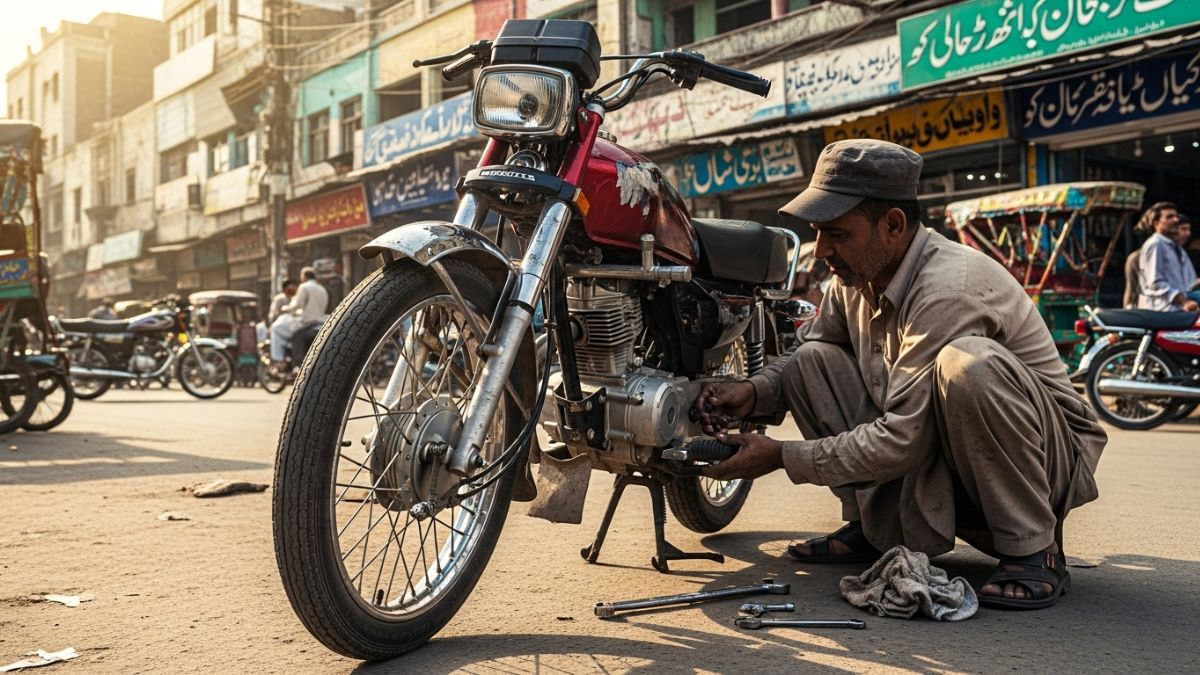Buying a used bike in Pakistan can be a cost-effective alternative to purchasing a new motorcycle, but it carries risks if not inspected carefully. Ensuring that the bike is in good condition requires a thorough check of both mechanical and legal aspects. This comprehensive guide provides a used bike inspection checklist for buyers in Pakistan in 2025.
1. Verify Ownership and Documentation
Before inspecting a used bike, ensure all legal documents are authentic and up to date:
- Registration Book (RC Book): Confirms the bike’s registration and ownership.
- Transfer Letter: Shows the bike’s ownership history and transfer details.
- Sale Receipt: Provides proof of purchase.
- CNIC Copy of Seller: Required for the legal transfer of ownership.
- MTMIS Verification: Use the Motor Transport Management Information System to confirm the bike is not stolen or involved in legal disputes.
Tip: Always cross-check engine and chassis numbers with the documents to avoid fraudulent purchases.
How to Transfer Bike Ownership in Pakistan: Complete Guide 2025
READ MORE
2. Visual and Structural Inspection
A careful visual inspection can reveal signs of accidents, damage, or poor maintenance:
- Frame and Chassis: Check for cracks, bends, or repaired welds.
- Body Panels and Paint: Look for scratches, dents, or mismatched paint.
- Suspension: Inspect front forks and rear shock absorbers for leaks or damage.
- Tires: Ensure sufficient tread depth and check for cracks or bulges.
- Brakes: Verify that brake pads and discs are in proper condition.
Tip: Cosmetic scratches are normal, but structural damage can affect safety and handling.
3. Mechanical and Engine Check
Examine the bike’s engine and mechanical systems thoroughly:
- Engine Condition: Check for oil leaks, rust, or unusual wear.
- Oil Quality: Ensure the oil is clean; dark or sludgy oil may indicate neglect.
- Fluid Levels: Verify coolant, brake fluid, and transmission oil levels.
- Exhaust System: Inspect for rust, cracks, or loose fittings.
- Battery: Check for corrosion on terminals and ensure it is securely mounted.
Tip: Consider hiring a trusted mechanic to inspect internal engine components.
4. Functional Test Ride
A short test ride can reveal issues not visible during a static inspection:
- Engine Performance: Listen for unusual noises, vibrations, or stalling.
- Gear Shifting: Ensure smooth and precise gear transitions.
- Braking: Test both front and rear brakes for responsiveness.
- Suspension: Evaluate comfort and handling over bumps and turns.
- Lights and Indicators: Confirm all electrical components function properly.
Tip: Test ride on different road conditions to fully assess performance.
READ MORE
5. Finalizing the Purchase
Once satisfied with the bike’s condition:
- Negotiate Price: Adjust based on wear, repairs needed, and market value.
- Secure Payment: Prefer bank transfers or cheques over cash.
- Ownership Transfer: Complete the process at the Excise Office or authorized center.
- Obtain Copies: Keep all transaction and transfer documents safe for future reference.
6. Additional Tips
- Hire a Mechanic: Even minor issues can become costly; a mechanic can detect hidden problems.
- Avoid Open Letters: Bikes with open letters can lead to legal complications.
- Research Market Prices: Know the fair market price of the bike model you intend to buy.
- Check Service History: Maintenance records indicate how well the bike has been maintained.
Conclusion
Purchasing a used bike in Pakistan requires careful attention to both legal documents and the bike’s physical and mechanical condition. Following this comprehensive used bike inspection checklist will help buyers make informed decisions, avoid potential issues, and ensure a safe, reliable purchase. Inspect thoroughly, negotiate wisely, and verify all documentation before completing the transaction.









